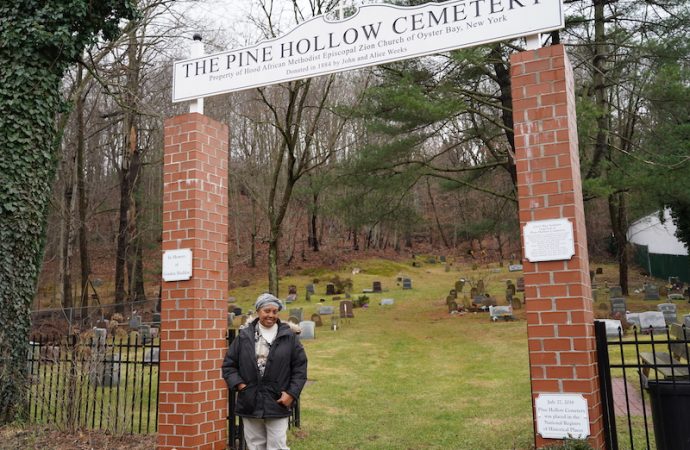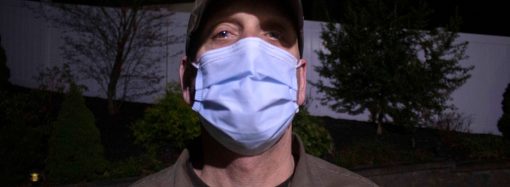By Gary Ghayrat
Fall 2019 JRN 364

“Grandpop, you said that our family ancestors weren’t slaves?” a young girl asked her grandfather in disbelief. He answered in a quiet tone, “as I had said, not all people of color were slaves, dear. There was a few of us that wasn’t enslaved.”
All Denice Sheppard remembered from her American History class in school was how humiliating it was to be asked if she, as the only black child in the classroom, wanted to be excused from class because of the graphic images of the treatment of black people in “A Birth of A Nation.” Her grandfather Percy Carl was the one who filled the gaps of African American history that is often told in textbooks as a single story of African Americans – slavery.
“I always had an interest in history; however, in school, they really didn’t show a lot about our culture, or our history,” Sheppard said. “They only thing that they showed us in school was that we were slaves.”
Now the executive director for the Oyster Bay Historical Society, Sheppard, has documented and told the stories of what she had heard from her grandfather Percy Carl, and what he had heard from his grandfather and a Civil War veteran, David Carll, and his father, Lewis Carll, who was a free black man working as a chauffeur for the Jones family on Long Island before slavery was ever abolished.
I always had an interest in history; however, in school, they really didn’t show a lot about our culture, or our history. They only thing that they showed us in school was that we were slaves.
Denice Sheppard, Executive Director Oyster Bay Historical Society
“I think that our local schools should implement these stories, because it will give the children more of an understanding that we’re all inclusive in the fabric of history, and not just part of the enslaved aspect,” Sheppard said.
In her books “The Constant Struggle Within,” and “Footsteps of a Forgotten Soldier – The Life and Times of David Carll,” co-written with her brother Francis Carl, she tells the family history of the Carls, a long tale full of adventures, entrepreneurship and challenges they faced as free African Americans.
Sheppard writes oral stories of how her grandfather Percy told her about David and how he said “seeing the slaves working from sun up to sun down daily appeared to be the most hurtful part of being free,” and how he helped some of them with clothing and food whenever he could. With documentation, Sheppard’s brother Francis was able to apply and receive a Presidential Certificate signed by President Barack Obama, recognizing the contribution David made during the Civil War.
For Sheppard, the search for her family history hasn’t stopped. She continues to be amazed by her great-great-grandfather, David, who married Mary Louisa Appleford, a white European woman, in 1862, the first interracial marriage in Oyster Bay. The furthest she can trace her family back to is his father, Lewis Carll, who was born in 1795 and lived as a free black man. How? She’s still looking for answers.
“I’m trying to figure out why… like, why was he free prior to the Civil War?” Sheppard said. “That’s really deep to think… where did they come from? What were they doing? How did they get here? And those are the questions I think if I had to ask them, if they were still living, where did it all start? Where’s the beginning?”
People around Sheppard have taken inspiration from her and started looking at their own family history, including Antionette Brookshire who works at the Oyster Bay Historical Society.
“I’ve been triggered,” she said. “You just wonder like, how did we get here? That’s one of the questions I always had. Because obviously, I’m African American, so then I asked the question, were my forefathers slaves? Were they free men, because there were some free men? What was their journey like on the ship from Africa? When they came to the States, where exactly did they come to? Or did part of my family first go to the Caribbean, and then from the Caribbean did they then migrate to the States… ?”
She said she wasn’t able to find out much about her family history but hasn’t given up on the task. People that come to the Oyster Bay Historical Society looking for their own family history often have been searching for around 20 years on average, she said.
“You just keep asking and asking and asking, and then for some people they eventually get up and go looking.”
When African Americans look for their enslaved ancestors, identifying the last name of the person you’re looking for can be a major obstacle, Claire Bellerjeau, a historian at the Raynham Hall Museum in Oyster Bay, said.
“At some point, you hit that brick wall of when we have a person and a first name, and you have to find a connection to the last time, and then try to find the particular white owner to really connect them to that era.”
In a recent discovery of Oyster Bay town hall documents dating back to 1823 and up to 1829, Bellerjeau found a Steven Carl who she believes is a relative of Sheppard’s. And a purchase document of an enslaved person named Steven from a Gilbert Carl might be the connection between the Carl name and a slave holder.
Sheppard was surprised when she learned about the news and said she will work with researchers like Bellerjeau to find out more. For now, she’s trying to preserve what she has found so far about her family.
At some point, you hit that brick wall of when we have a person and a first name, and you have to find a connection to the last time, and then try to find the particular white owner to really connect them to that era.
Claire Bellerjeau, historian
Pine Hollow Cemetery, where David Carl and the rest of Sheppard’s family is buried, was designated as a historic site in 2018 with her efforts working with the African American Methodist Episcopalian Church.
Sheppard said, although there were challenges along the way to making the site recognized by the government, she was happy to see the cemetery clean and maintained where one day she says she will be buried among her family members.
“I’m happy because I know that they’re smiling down,” she said, standing in front of the cemetery. “I know that they are smiling down, so yes, I’m happy.”

